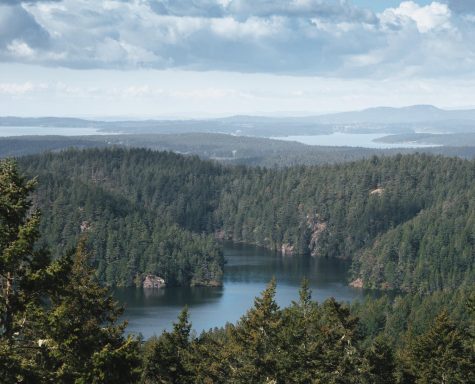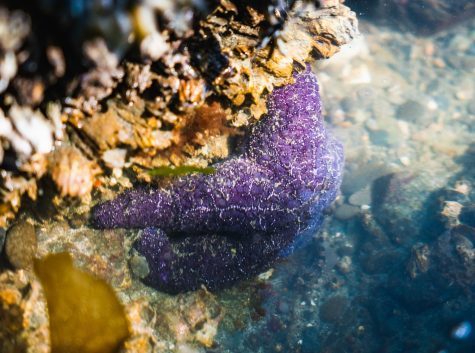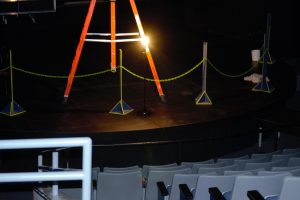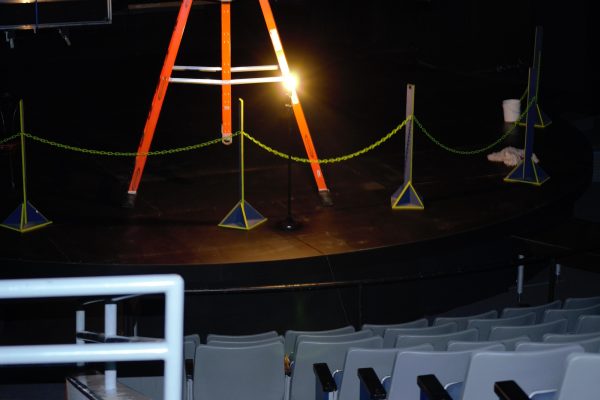Blakely Island: Lessons from the wilderness
April 28, 2022

I saw a pile of bones partially hidden in the soil next to the mossy patch I had napped on earlier. A small skull, some ribs, vertebrae – it was certainly a young one. I didn’t need a microscope to know that much. Either way, I was going to need one of its jaws, if it was to be of any use in the lab.
I plunged my hands into the damp soil, hoping to uncover more bone as the dirt slowly got under my fingernails. Alas, there was nothing but worms. I stood up on that mossy ledge and looked out over the cliff in front of me. Although it was a cold day, the sun felt warm, and made the Puget Sound’s blue waters glimmer. It felt deceptive, but beautiful.
Blakely Island, up in the San Juan Islands, is home to Seattle Pacific University’s very own biological field station. It has a bit of everything, with so many types of ecosystems and places to explore – the field station sits close to a lake, and is completely surrounded by trees. Winding through the trails nearby or even bushwacking to the side, one can even get to high peaks that look out for miles over the Puget Sound and into Canada.
There are also hardly any full time residents on the island— a person is more likely to cross paths with a deer than another person. It’s a place where many of us studying biology and ecology get a chance to connect with nature in a more intimate and quiet way.
During my time as an ecology student, I’ve been able to participate in a research project for two years looking at deer survivorship on Blakely Island– that is, the proportion of individuals surviving to each age for a species. This involves collecting deer skulls and using a specific tooth from the jaw bone to create microscope slides that can be used to look at tooth rings that are comparable to tree rings; they tell us roughly how old the deer was when it died.
While studying these skulls, I often think about the life that once was. I can imagine the deer I’ve encountered on Blakely Island: munching on leaves, slowly meandering through the forest, pausing suddenly with the sound of my feet crunching the ground. A life that now is only marked by bone, by fragments.

I feel connected to their stories. As I get ready to graduate this June, I know my time on Blakely Island, the place where I developed many of my skills as an ecologist, may come to an end. The season of being an undergraduate student will no longer be. Although so many parts of me are excited for the unknown, I can’t help but feel fear for what’s ahead. Will my time as a student end up just being a fragment, a shell of what once was? Will I ever find a sense of place and be able to use the knowledge I’ve gained elsewhere?
But I remind myself that these deer skulls have told me other stories too, ones that aren’t so quantifiable as my research. They speak to a strange, dichotomous reality that all living organisms face: many beginnings of a new life come from the end of another. As the deer passes away, its body becomes nutrients for the soil, and provides fungi and bugs and other creatures their own means of survival. The earth reclaims what once was and turns into something different, allowing for the cycle of life to continue.
I’ve only ever known who I am within the education system. It feels like with graduation, I’m about to be thrown into an entirely new ecosystem. But thinking of the deer, I try to look at it this way: perhaps these years of being in college (and really, a lifetime of being in school,) are much like the remains of the deer in the forest. They are decaying, they are ending– but with that end comes the possibility of new growth, and of reusing the pieces of my life in a completely new way.
























































































